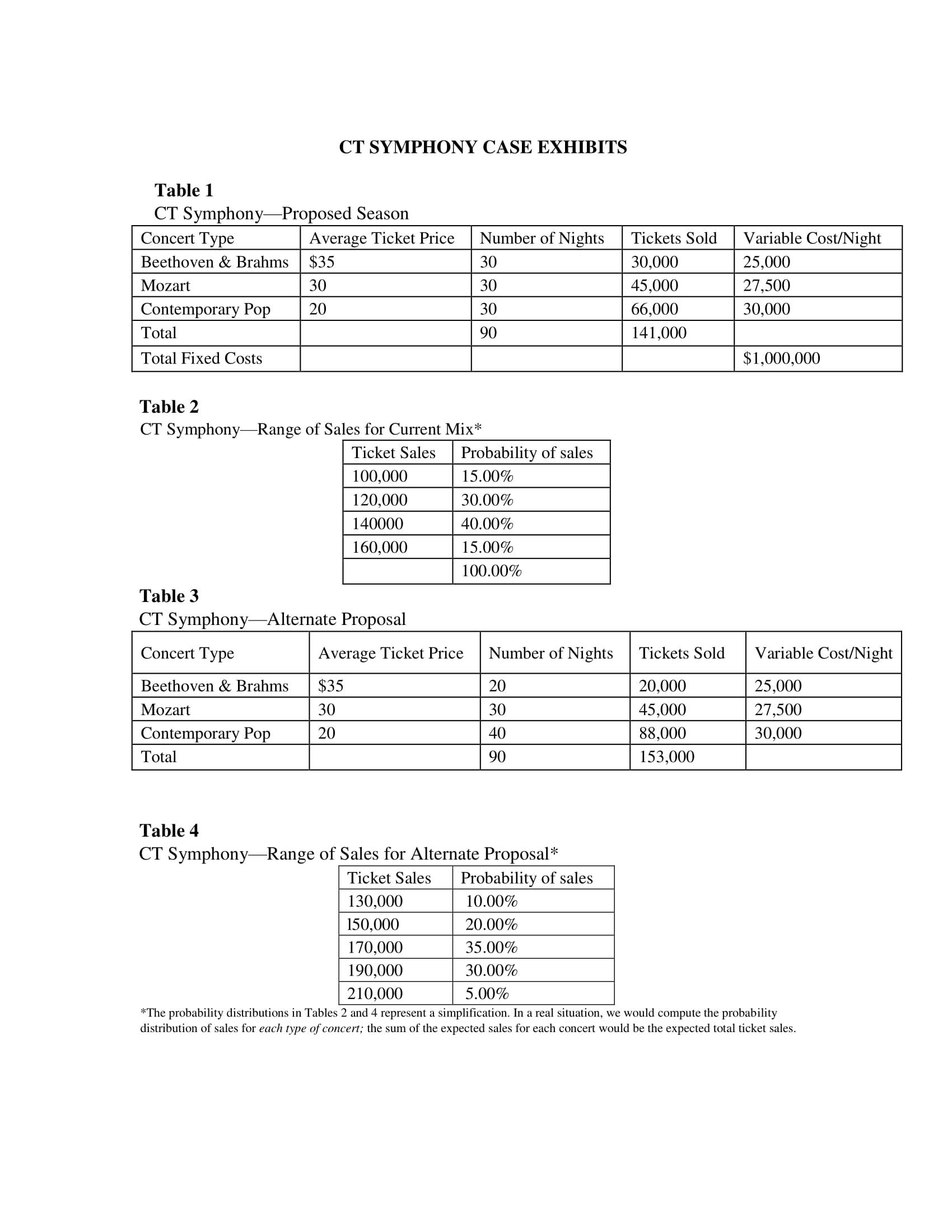Question
CT-Symphony Orchestra The CT-Symphony Orchestra is a branch of the Center for Performing Arts. It performs regular concerts throughout the year and has been reasonably
 CT-Symphony Orchestra
CT-Symphony Orchestra
The CT-Symphony Orchestra is a branch of the Center for Performing Arts. It performs regular concerts throughout the year and has been reasonably profitable in the past. However, in recent years, concert attendance has been declining and the Orchestra is looking for ways to boost attendance.
The traditional customers of the Orchestra have been the older and more affluent segment of the population that live in the suburbs. The recent boom in the high-tech sector, however, has created an affluent population that is younger and has different musical tastes. This younger affluent group prefers to live in the city rather than commute from the suburbs. Older people concerned about crime in the downtown district do not like attending evening concerts. Increased traffic congestion also discourages them from driving into the city’s downtown cultural district. These are some of the main reasons why attendance has declined.
To reach its traditional audience and to attract the younger audience, the Orchestra has decided to perform outdoor concerts in parks during the summer. It is in the process of selecting its mix of concerts for the upcoming summer. The summer season consists of 90 concerts given once per evening.
When concerts are offered outside the Symphony Hall, the home base for the Orchestra, musicians are hired and paid on a per concert or nightly basis. The Orchestra contracts with private firms for services such as ticket sales, transportation of equipment, sound technicians, and security. These too are paid on a per concert or per night basis.
The Orchestra has a full-time permanent staff of a musical program director, box office manager, administrative staff, and a director. These administrators are on salary. Other costs include office space rental, equipment, and utilities.
The Orchestra is considering three types of concerts for the next season:
a. Classical selections from Beethoven and Brahms
b. More Mozart—a selection from Mozart’s music
c. Contemporary Pop and Rock Selections
Table 1 contains the marketing department’s projections of sales and revenue for each type of concert.
Since this is a new direction with no prior sales history, the director of the Orchestra, Sarah Bernhardt, is concerned about the certainty of ticket sales. She has asked the box office manager to provide some sense of how sure he is that 141,000 tickets can be sold. She wanted to know the range of ticket sales so she could assess the risk the Orchestra faces. The box office manager has provided the following additional information.
question
Assume that the box office manager would like to change the mix of concerts and has supplied you with the information shown in Tables 3 and 4. The cost information remains unchanged. Compute the breakeven point for ticket sales and expected profit using average revenue per ticket and the average cost per ticket. What is the safety margin?
CT SYMPHONY CASE EXHIBITS Table 1 CT Symphony-Proposed Season Concert Type Average Ticket Price Number of Nights Tickets Sold Variable Cost/Night Beethoven & Brahms $35 30 30,000 25,000 Mozart 30 30 45,000 27,500 Contemporary Pop 20 30 66,000 30,000 Total 90 141,000 Total Fixed Costs $1,000,000 Table 2 CT Symphony-Range of Sales for Current Mix* Ticket Sales Probability of sales 100,000 15.00% 120,000 30.00% 140000 40.00% 160,000 15.00% 100.00% Table 3 CT Symphony- Alternate Proposal Concert Type Average Ticket Price Number of Nights Tickets Sold Variable Cost/Night Beethoven & Brahms $35 20 20,000 25,000 Mozart 30 30 45,000 27,500 Contemporary Pop 20 40 88,000 30,000 Total 90 153,000 Table 4 CT Symphony-Range of Sales for Alternate Proposal* Ticket Sales Probability of sales 130,000 10.00% 150,000 20.00% 170,000 35.00% 190,000 30.00% 210,000 5.00% *The probability distributions in Tables 2 and 4 represent a simplification. In a real situation, we would compute the probability distribution of sales for each type of concert; the sum of the expected sales for each concert would be the expected total ticket sales.
Step by Step Solution
3.37 Rating (150 Votes )
There are 3 Steps involved in it
Step: 1
1 The Profit Breakeven point and Margin of Safety as per Proposed plan is 245000 2987952 and 732048 respectively 2 The Profit Breakeven point and Margin of Safety as per Table 2 plan which is used by ...
Get Instant Access to Expert-Tailored Solutions
See step-by-step solutions with expert insights and AI powered tools for academic success
Step: 2

Step: 3

Ace Your Homework with AI
Get the answers you need in no time with our AI-driven, step-by-step assistance
Get Started


